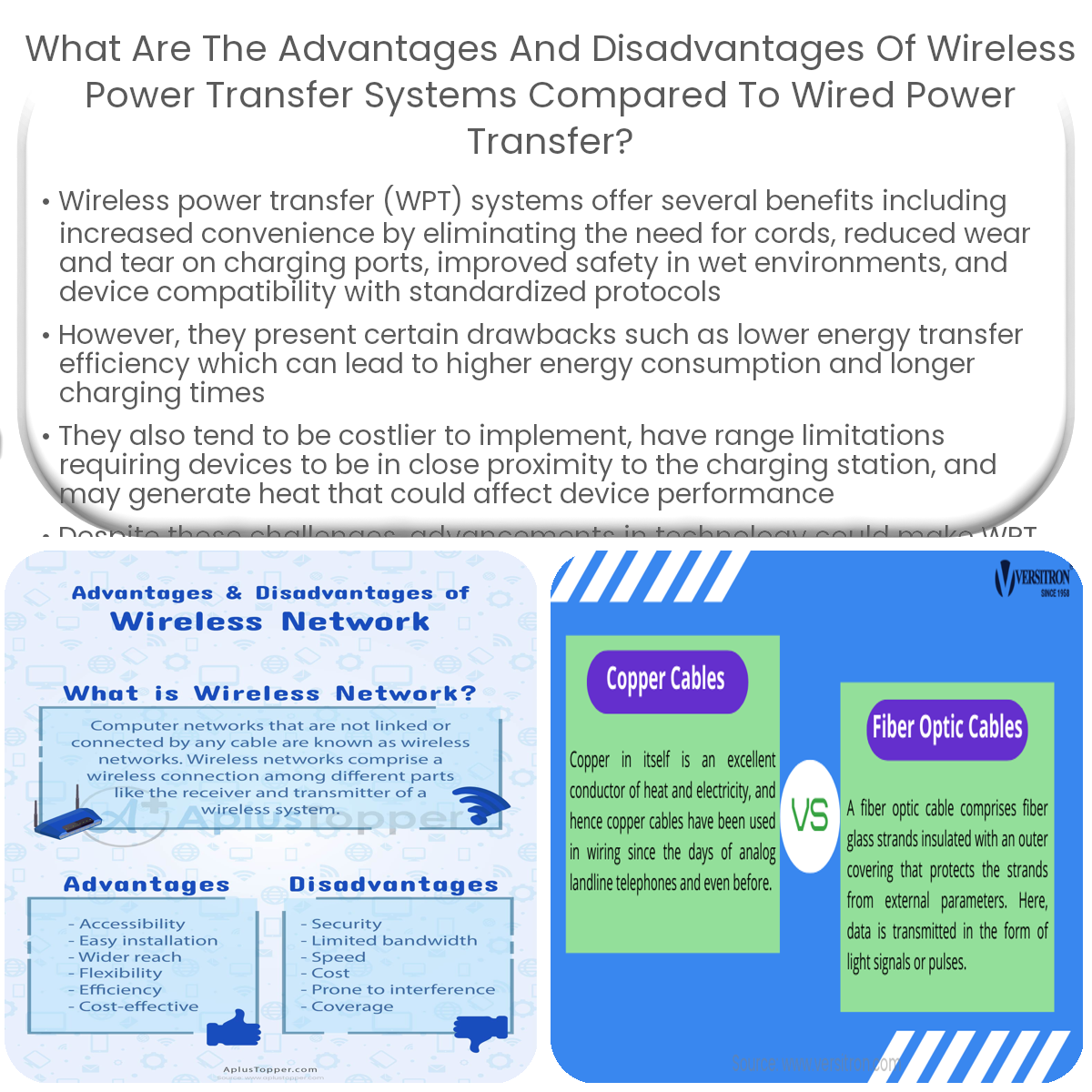Wireless power transfer systems offer convenience, reduced wear and tear, and enhanced safety, but face lower efficiency, increased costs, range limitations, and heat generation issues.
Advantages and Disadvantages of Wireless Power Transfer Systems Compared to Wired Power Transfer
Wireless power transfer (WPT) technology has been gaining popularity over the past few years, with applications in consumer electronics, electric vehicles, and medical devices. In this article, we will discuss the advantages and disadvantages of WPT systems compared to wired power transfer.
Advantages
- Convenience: WPT systems eliminate the need for cords and plugs, making it easier to charge devices without the hassle of connecting and disconnecting cables.
- Reduced wear and tear: With no physical connection, WPT systems reduce the risk of damage to charging ports and connectors caused by repeated plugging and unplugging.
- Increased safety: WPT systems can be designed to be water-resistant or even waterproof, making them safer to use in wet environments or around liquids, reducing the risk of electrical hazards.
- Device compatibility: Many WPT systems use standardized charging protocols, making it possible to charge multiple devices with a single charging pad or station.
Disadvantages
- Lower efficiency: WPT systems can have lower energy transfer efficiency compared to wired power transfer, leading to increased energy consumption and longer charging times.
- Increased cost: Implementing WPT technology in devices and infrastructure may result in higher costs compared to traditional wired power transfer systems.
- Range limitations: WPT systems have limited range, with most systems requiring the device to be in close proximity to the charging pad or station. This makes it less convenient for charging larger devices or multiple devices simultaneously.
- Heat generation: WPT systems can generate heat during the charging process, which may affect the performance and lifespan of electronic devices if not properly managed.
In conclusion, wireless power transfer systems offer the potential for increased convenience, reduced wear and tear, and enhanced safety compared to wired power transfer systems. However, there are still challenges to overcome, such as lower efficiency, increased costs, range limitations, and heat generation. As technology continues to advance, it is likely that these drawbacks will be addressed, making WPT systems even more attractive for a wide range of applications.


